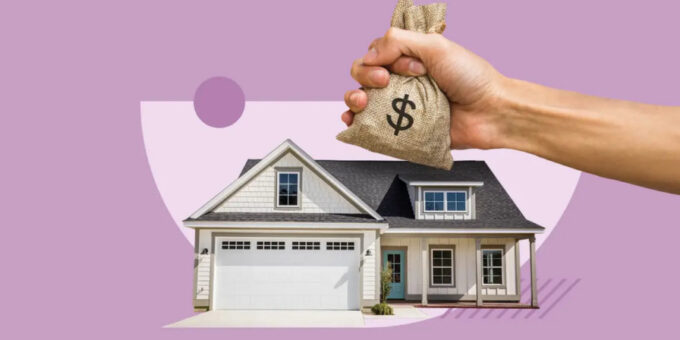
One of the biggest myths in real estate is that you absolutely need a 20% down payment to buy a home. For many aspiring homeowners, saving up that much cash can feel like an impossible mountain to climb. It is often the single greatest barrier that keeps people renting for years longer than they want to.
Here is the good news: the 20% rule is not a rule at all. It is a guideline.
It is entirely possible to get a mortgage and buy your dream home with a much smaller down payment—in some cases, with no down payment at all. This guide will walk you through the proven, accessible loan programs designed to make homeownership a reality for everyone, not just those with huge savings accounts.
The Truth About the 20% Down Payment
First, let’s understand why the 20% figure is so famous. When you put down 20% or more, you avoid paying something called Private Mortgage Insurance (PMI). PMI is an insurance policy that protects the lender, not you, in case you default on the loan. It is the lender’s way of managing the higher risk associated with a low down payment.
While avoiding PMI is a great long-term financial goal, paying it for a few years is often a small price for getting into a home and starting to build equity sooner. The following programs are your key to doing just that.
Top Low Down Payment Mortgage Programs
1. FHA Loans
The FHA loan is the champion of the first-time homebuyer. Backed by the Federal Housing Administration, these loans are designed to make homeownership more accessible.
-
Minimum Down Payment: As low as 3.5%.
-
Who It’s For: Ideal for buyers with lower credit scores (some lenders go as low as 580) and those who do not have a lot of cash saved up.
-
The Catch: You will have to pay a Mortgage Insurance Premium (MIP). This includes an upfront premium and a monthly premium that typically lasts for the life of the loan.
2. VA Loans
If you are a veteran, active-duty service member, or an eligible surviving spouse, the VA loan is one of the most powerful financial benefits you have earned.
-
Minimum Down Payment: 0%. That is not a typo. You can finance 100% of the home’s value.
-
Who It’s For: Eligible military members and veterans.
-
The Catch: There is no monthly mortgage insurance, which is a massive advantage. However, most borrowers will pay a one-time “VA funding fee.” This fee can be rolled into the total loan amount.
3. USDA Loans
This is another 0% down payment option that many people do not know about. Backed by the U.S. Department of Agriculture, these loans are designed to encourage development in less densely populated areas.
-
Minimum Down Payment: 0%.
-
Who It’s For: Buyers with low-to-moderate incomes who are purchasing a home in an eligible rural or suburban area. You would be surprised how many suburbs qualify.
-
The Catch: There are strict income limits and the property must be located in a USDA-eligible zone. You can check property eligibility on the USDA website.
4. Conventional 97 Loan
This is a conventional loan (meaning it is not backed by the government) that competes directly with FHA loans.
-
Minimum Down Payment: 3%.
-
Who It’s For: Buyers with good credit scores (typically 620 or higher) who may not qualify for the other programs.
-
The Catch: You will have to pay Private Mortgage Insurance (PMI). However, unlike the FHA loan’s MIP, the PMI on a conventional loan can be canceled once you reach 20% equity in your home. This is a significant long-term advantage.
The Secret Weapon: Down Payment Assistance (DPA) Programs
What if even a 3% down payment feels like a stretch? This is where Down Payment Assistance programs come in. These are programs, often run by state or local housing authorities, that provide grants or low-interest second loans to help you cover your down payment and closing costs.
These programs can make a huge difference, sometimes covering your entire down payment requirement. To find programs in your state, the U.S. Department of Housing and Urban Development (HUD.gov) is an excellent starting point.
How to Prepare Your Finances
Qualifying for these loans still requires you to be a strong borrower. Before you apply, focus on these three things:
-
Boost Your Credit Score: A higher credit score will get you a better interest rate and make your application more attractive to lenders. Pay your bills on time and keep your credit card balances low.
-
Lower Your Debt-to-Income (DTI) Ratio: Your DTI is the percentage of your gross monthly income that goes toward paying your monthly debts. Lenders want to see a low DTI. Pay down high-interest debt where you can.
-
Get Pre-Approved: Before you start house hunting, get a mortgage pre-approval. This tells you how much you can realistically afford and shows sellers you are a serious buyer. For a full breakdown of this crucial step, see [Our Complete Guide to Getting Pre-Approved for a Mortgage](your-internal-link-here).
Conclusion: Homeownership is Within Your Reach
The dream of owning a home is not reserved for those with a 20% down payment sitting in the bank. Thanks to powerful programs like FHA, VA, and Conventional 97 loans, the path to homeownership is more accessible than ever.
By understanding your options, strengthening your financial profile, and taking that first step to get pre-approved, you can turn your homeownership dream into a reality.
You can also read Here about more article.
